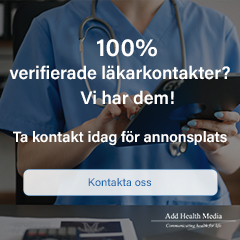Launch Excellence in a disrupted world: challenges and opportunity
Launch Excellence in a disrupted world: challenges and opportunity
Since 2007 IQVIA has examined which launches have been the most commercially successful in the recent timeframe, of innovative, protected new products. The findings have been published in a series of Launch Excellence studies. In this article Sarah Rickwood, Markus Gores, Yasemin Karanis, and Alexandra Smith present some of the key findings, the fundamentals for achieving a successful launch and long-term trends driving the launch environment.
A consistently compelling finding of the entire Launch Excellence series is the six-month window of opportunity which shows the significance of early performance. Speciality launches dominate in excellence, and is winning in the long term, even amongst older products. It is tough to achieve consistent launch excellence across countries, only few launches meet the base criteria for an excellent launch internationally.
The global pharmaceutical industry is changing, as is the environment for innovative product launch [Figure 1]. Molecular innovation is being supplemented, and in some instances could be replaced, by other forms of innovation, including highly individualised, procedure- like cell and gene therapies. The nature of launches will continue to evolve, faster than ever before. However, the fundamentals of Launch Excellence remain the same.
The rise of specialty as the key value growth driver of the developed markets, has created a situation where most launches, and almost 100 percent of the most successful launches, are for globally small, sometimes tiny, patient populations. 2018 was the first year in which both the FDA and the EMA approved more Orphan medicines, for rare diseases, than mainstream products. Mass market common, chronic diseases of the elderly don’t drive pharmaceutical value growth anymore; increasingly, value growth is a product of high value therapies for small patient populations. For multi-indicational products, launch is no longer a one-off event. In addition, faster approvals on early clinical data and longer journeys to full market access, due to extended real world assessment, create an extended launch period. Also, full life-time value must be considered. A product may have 10 indications during its full lifecycle.
The class of 2019 specialty dominates in both achievement and in return on investment
In our Launch Excellence reports we have sought balance between consistency of analysis and adaptation to the changing realities of the launch environment – the biggest change being the vertiginous rise in the number and commercial impact of specialty launches, especially oncologicals. In Launch Excellence Report V, specialty products outperformed primary care launches on all Launch Excellence measures, and only specialty products were in the elite group of launches which performed consistently excellently across countries. Primary care launches operate in a more constrained environment, and at present the overall opportunity for these products is often reduced. Of 136 specialty launches analysed across seven countries (US, top 5 Europe, Japan) 8 percent (11 products) met our base three criteria in more than one country. Of the 146 primary care launches, 5 percent (7 products) did the same. Overall, 6 percent of the cohort of specialty and primary care launches met our three base criteria internationally. To achieve consistent Launch Excellence across countries is extremely tough.
We also analysed launch investment, the promotional activities, non-digital and digital, addressed to healthcare professionals, as measured by IQVIA’s ChannelDynamicsTM audit. True Launch Excellence should not be bought at any price. Our findings show that a greater proportion of specialty brands are both excellent and have high return on investment. However, a top best seller is not always example of an Excellent launch due to promotional out-performance
– e.g. exceptionally high investments during the first two years.




